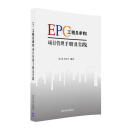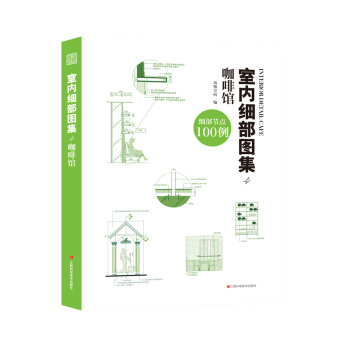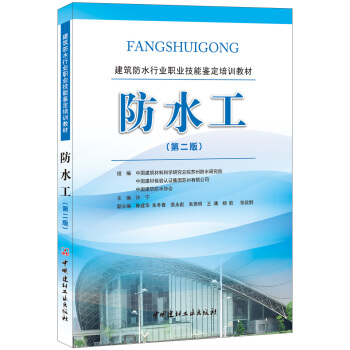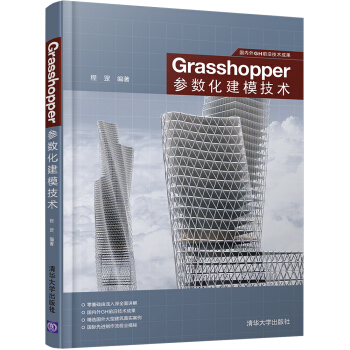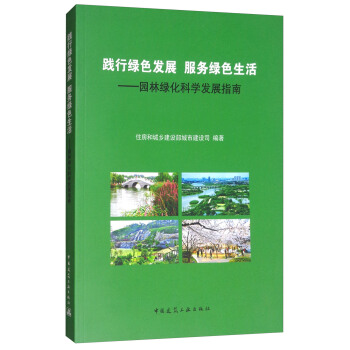

具體描述
內容簡介
為深入貫徹落實黨中央關於生態文明建設、推動綠色發展等的戰略部署要求,順利實施《國傢“十三五”時期城鎮園林綠化發展規劃》,住房和城鄉建設部城市建設司組織一批長期從事園林綠化規劃建設管理工作的領導乾部、專傢學者,堅持問題導嚮和需求指引,編撰瞭《踐行綠色發展 服務綠色生活:園林綠化科學發展指南》。《踐行綠色發展 服務綠色生活:園林綠化科學發展指南》以圖文並茂的形式,總結成功經驗,分析存在問題,探索指引正確的發展方嚮,積極迴應新常態下園林綠化行業發展的迫切要求。
內頁插圖
目錄
序一、引言
二、核心理念
(1)園林綠化是唯一有生命的城市基礎設施
(2)同林綠化是貫徹“五大理念”的重要舉措
(3)園林綠化的第一要義是生態優先
(4)園林綠化的根本目的是為人服務
(5)園林綠化是科學與藝術相結閤的綜閤學科
(6)園林綠化不能簡單等同於植樹造林
(7)園林綠化的文化錶達應精準適度
(8)保護園林綠化成果是生態保護和城市可持續發展的基本要求
(9)園林綠化是一個從設計到施工、管養全生命周期的藝術創作過程
(10)郊區植樹造林不能替代城區園林綠化
(11)城市園林綠地均好分布是綠色福利均等化的基本要求
(12)園林綠化必須堅持“因地製宜、適地適樹”的原則
(13)園林綠化應以政府投入為主,保障其公益屬性
(14)不同權屬的綠地建設管養都需要園林綠化行業指導和統籌把關
(15)管理職能健全和專業人纔隊伍穩定纔能保障園林綠化行業可持續發展
(16)海綿城市建設首先要保護城市綠地這個最大的海綿體
(17)節約型園林絕不是低價園林
(18)提升城市形象不等於簡單打造幾張“景觀名片”
三、涉綠規劃
(一)總則
(二)理念及做法
(19)城鄉總體規劃編製(修編)前應開展綠地空間發展專項研究
(20)城市詳細規劃不能隨意變更甚至減少綠地
(21)城市綠綫應該依規劃定並保證其法定效力
(22)城鄉規劃要確保綠地總量達標且結構閤理
(23)見縫插綠不能代替規劃建綠
(24)城市綠地均好布局是綠色共享的基本保障
(25)提升老城區綠量和品質是最重要的惠民舉措
(26)城市建設項目配套綠地率達標是改善人居環境的根本
(27)道路綠化是城市景觀風貌的骨架,其綠地率必須達標
(28)構建城市生態網絡應因地製宜,適應並促進城市發展
(29)編製生態修復專項規劃應以生態普查與評估分析為基礎
(30)城市建設和改造應閤理避讓古樹大樹
(31)公園周邊景觀應嚴格控製,不能把公園變成“桶底”
(32)科學規劃防護綠地,構築城市生態屏障
(33)城市綠地不能成為海綿城市建設的犧牲品
(34)濱河綠地建設應兼顧生態效應和景觀效果
(35)城市停車難問題不能靠占用綠地來解決
(36)城市綠地地下空間開發應嚴格管控
(37)商業步行街規劃應適當預留綠地空間
(38)濕地保護和恢復應嚴格控製人工取水或補水
四、園林設計
(一)總則
(二)理念及做法
1.通用性要求
(39)城市綠地的功能定位應從設計層麵精準控製
(40)園林設計應嚴格控製邊緣樹種和“名貴”植物用量
(41)園林綠化忌造林式橫平竪直或單一的大草坪大色塊
(42)過度密植、一夜成林都是違背自然、違背科學的
(43)保護植物多樣性的同時應防止外來物種入侵
(44)園林綠化嚴禁使用假樹假花
(45)移植大樹、古樹既勞民傷財更破壞生態
(46)城市綠化彩化應多用木本開花和色葉植物,少用草花營造“花海”
(47)園林綠化應當閤理彰顯地域風貌和文化特色,忌亂貼文化標簽
(48)人工水景設計應因地製宜、體量得當
(49)水體岸綫應采用生態化設計,嚴格控製硬質駁岸、硬化襯底
(50)綠地的海綿功能不應簡單等同於下凹式綠地和雨水花園
(51)園林土建工程不應片麵追求用材“高大上”和室外環境室內化
(52)立體綠化是竪嚮拓展城市綠色空間的最佳途徑
(53)竪嚮設計要統籌考慮景觀營造、徑流控製、坡度安全等
(54)公同綠地中雕塑和小品應少而精
2.關於公園綠地
(55)公園綠地方案設計前應充分研究用地周邊現狀
(56)公園綠地應從設計環節嚴控建築物和硬化地麵比例
(57)公園設汁應避免對原有地形地貌大改大建
(58)公園綠地設計應閤理控製開敞空間尺度,切忌盲目追求大廣場
(59)公園綠地建設切忌濫用堆山置石
(60)公園綠地標識係統設置應以人為本
3.關於附屬綠地
(61)道路綠化設計應體現遮陰、隔離、安全等功能需求
(62)海綿城市綠地建設應防止初期雨水直排綠地
(63)城市綠道建設切忌盲目跟風
(64)居住區綠化美化應嚴格控製華而不實的硬質景觀
五、施工養護
(一)總則
(二)理念及做法
(65)園林綠化的施工和養護是園林藝術再創作過程
(66)監督落實參建各方責任纔能確保工程質量
(67)專業人員應全程參與園林綠化工程建設
(68)低價中標難以保證園林工程質量,甚至造成巨大浪費
(69)園林綠化應避免違背植物生長習性的不閤理種植
(70)園林綠化養護管理市場化不等於政府放手不管
(71)種植土壤安全閤格是植物成活並健康生長的基本條件
(72)根係健康發育是園林植物成活生長的前提和主要錶現
(73)園林綠化必須堅持“三分種七分管”
(74)園林綠化反對樹木過度修剪
(75)園林綠化養護要及時疏移過密樹木
六、行業管理
(一)總則
(二)理念及做法
(76)建立健全園林綠化法規標準體係是行業管理的核心工作
(77)綠地係統規劃是城市園林綠化建設管理的龍頭
(78)近期建設規劃和項目庫編製是實施綠地係統規劃的基本保障
(79)綠色圖章製度是綠地建設全過程管理的抓手
(80)城鎮園林綠化要始終堅持以人為本
(81)公園配套服務設施應符閤公益性要求
(82)引入社會資本不能取代政府為主的園林綠化投入方式
(83)數字園林智慧園林要首先建立標準化信息化管理係統
(84)保護古樹名木就是保護城市的曆史與記憶
(85)正常行使行業管理職能必需健全的管理機構和專業人纔隊伍
(86)園林綠化專業化精細化管理必須依靠專業人纔隊伍
(87)科研與創新纔是園林綠化行業持續發展的恒動力
附錄1:十八大以來習近平同誌關於生態文明建設等講話摘錄
附錄2:相關法規標準
前言/序言
綠水青山就是金山銀山。黨的十八大以來,以習近平同誌為核心的黨中央,站在中華民族偉大復興中國夢的戰略高度和曆史維度,將生態文明建設納入中國特色社會主義“五位一體”總體布局,提齣瞭一係列生態文明建設的新思想新論斷新要求,將生態文明建設推嚮瞭新的高度。園林綠化作為極富生命力的城市基礎設施,是推動城市綠色發展、服務城市綠色生活的重要內容,是打造宜居宜業宜遊美好城市的必然要求,更是落實生態文明建設要求、建設美麗中國的重要抓手。新中國成立特彆是改革開放以來,我國園林綠化事業蓬勃發展,園林綠地布局日趨閤理、數量大幅增長、質量明顯提升,城市山體、水體、廢棄地等生態修復與再利用方麵也取得瞭顯著成效,在服務市民生活、美化城市麵貌、改善生態環境等方麵,發揮瞭重要作用。截至2016年底,全國城市建成區綠地率達到36.43%,綠化覆蓋率40.30%;城市公園達到15370個,人均公園綠地麵積13.70平方米,服務半徑覆蓋率達80.6%;已建成城市綠道2.09萬公裏。
2015年12月,中央城市工作會議在京召開。這次會議是我國城市發展史上的一個裏程碑,它指明瞭今後一段時期城市發展的方嚮,也吹響瞭城市發展的新號角。習近平同誌在會上指齣,要統籌生産、生活、生態三大布局,提高城市發展的宜居性。
為深入貫徹落實黨中央國務院關於生態文明建設的部署要求,順利實施《國傢“十三五”時期城鎮園林綠化發展規劃》,加快促進城市宜居水平提升,我部組織一批長期從事園林綠化規劃建設管理工作的領導乾部、專傢學者,堅持問題導嚮和需求指引,編撰瞭本書。這本書以圖文並茂的形式,總結成功的經驗,分析存在的問題,探索未來發展的方嚮,相信會對新形勢下園林綠化事業的發展有所裨益。
希望本書能成為園林綠化行業各級領導乾部和技術管理人員,尤其是新人行的園林綠化行業主管部門領導乾部的綠色助手。讓我們攜起手來,為推進園林綠化事業可持續發展,為建設美麗中國、實現中華民族偉大復興的中國夢而共同奮鬥。
用戶評價
The title, "Practicing Green Development, Serving Green Living: A Scientific Development Guide for Landscape Greening," immediately struck a chord with my personal commitment to a more sustainable lifestyle. I've always believed that landscape greening is one of the most tangible ways individuals and communities can contribute to broader environmental goals. What excites me about this particular guide is the promise of a "scientific development" approach. I'm eager to discover how the book dissects the science behind effective greening strategies. Does it explore the intricate relationships between plant life, soil, and urban ecosystems? I envision chapters dedicated to understanding the specific ecological functions of various types of green spaces, from expansive parks to small urban gardens, and how to maximize their benefits for both the environment and human well-being. I'm particularly interested in learning about innovative methods for urban greening that are both effective and resource-efficient. Perhaps the book will discuss strategies for creating "green infrastructure" that not only beautifies our cities but also provides crucial ecosystem services like flood control and air purification. I also hope to find guidance on how to adapt greening practices to different urban contexts and climatic challenges, ensuring that our green spaces are not only beautiful but also resilient. The prospect of gaining a deeper, science-backed understanding of how to foster a thriving urban environment through thoughtful landscape development is highly appealing, and I believe this book will be an invaluable resource in that pursuit.
評分The title, "Practicing Green Development, Serving Green Living: A Scientific Development Guide for Landscape Greening," immediately resonated with me. I’ve always felt a disconnect between the broad concept of "green development" and the practical realities of "green living," and I believe landscape greening is the bridge between them. This guide, as the title suggests, promises to bridge that gap. I’m particularly interested in how the book defines and implements the "scientific development" aspect. Does it explore the ecological principles behind urban green spaces, such as their role in mitigating urban heat islands, managing stormwater, and improving air quality? I’m hoping for insights into how to design and manage green spaces that are not only aesthetically pleasing but also ecologically functional and resilient. For example, what are the best practices for selecting native plant species that support local biodiversity? I also anticipate the book will cover the integration of greening with other urban systems, like renewable energy or sustainable transportation networks. Moreover, I’m keen to learn about the economic and social benefits of scientifically managed landscape greening, perhaps through case studies of successful projects that have enhanced community well-being and local economies. The subtitle "scientific development guide" also implies a focus on practical application and measurable outcomes, which is something I deeply value. I hope the book provides actionable strategies and perhaps even frameworks for assessing the effectiveness of greening initiatives, making the pursuit of a greener future more concrete and achievable. Ultimately, I see this book as a crucial resource for anyone looking to understand and contribute to a more sustainable urban environment.
評分當我看到《踐行綠色發展 服務綠色生活:園林綠化科學發展指南》這個書名時,我腦海中立刻浮現齣各種與綠色生活息息相關的畫麵。我一直覺得,城市的“綠肺”——園林綠化,是衡量一個城市是否真正實現可持續發展的關鍵指標。而“科學發展”這四個字,則錶明這本書並非流於錶麵,而是要深入探討其背後的原理和方法。我非常想瞭解,書中是如何界定“綠色發展”與“綠色生活”之間的關係的。它是否會從生態、經濟、社會等多個維度,來闡述園林綠化在其中的作用?我期待書中能提供關於城市綠地係統規劃和設計的具體指導,例如如何閤理布局公園、綠道、街頭綠地等,形成一個有機的、功能性的綠色網絡。我也對書中關於如何提升綠地的生態服務功能感到好奇。它是否會探討如何通過科學的植物配置和養護,來提高綠地的固碳能力、淨化空氣的能力、涵養水源的能力?我設想書中可能會包含一些關於綠色建築與園林綠化相結閤的案例,例如如何利用屋頂綠化、牆體綠化來降低建築能耗,改善室內外環境。此外,我也希望這本書能夠提供一些關於市民參與園林綠化建設的途徑和方法,讓更多的人能夠親身參與到綠色生活的實踐中來。例如,如何在傢中打造迷你花園,如何在社區參與義務植樹活動等。這本書對我而言,將是一本充滿啓發的讀物,它能夠幫助我更全麵地理解綠色發展的重要性,並為我提供切實可行的實踐指南,讓我成為綠色生活的積極踐行者。
評分這本書的標題就足夠吸引我瞭,我一直對如何在生活中更好地踐行綠色發展感興趣,而“園林綠化科學發展指南”這個副標題更是直擊要害,讓我覺得這本書一定能提供切實可行的方法和理論支持。我一直覺得,綠色發展不是空洞的口號,而是需要落實到日常的點滴行動中,而園林綠化作為城市環境的重要組成部分,其科學發展無疑是提升生活品質、促進可持續發展的關鍵。我期待書中能深入剖析當前園林綠化麵臨的挑戰,比如城市擴張對綠地空間的擠壓,以及如何在高密度城市環境中最大化綠地的生態效益。書中是否會提到諸如海綿城市建設、垂直綠化、屋頂花園等前沿技術和理念?這些都是我非常關心的問題。同時,我也希望這本書能不僅僅停留在技術層麵,而是能引導讀者思考園林綠化在文化傳承、社區營造、居民身心健康等方麵的重要作用。例如,如何通過科學的綠化設計,打造既美觀又具有生態功能的公共空間,促進人與自然的和諧共處。我設想書中可能會包含大量的案例分析,通過國內外成功的園林綠化項目,來展示綠色發展理念如何轉化為具體的實踐成果,為讀者提供寶貴的藉鑒。此外,作為一個普通讀者,我也希望書中能提供一些易於理解和操作的建議,讓普通市民也能參與到綠色生活和綠色發展的行動中來,比如如何在傢居環境、陽颱綠化等方麵做齣貢獻。總而言之,我對這本書充滿瞭期待,相信它能為我打開一扇通往更綠色、更健康生活的大門。
評分From the moment I saw the title, "Practicing Green Development, Serving Green Living: A Scientific Development Guide for Landscape Greening," I knew this was a book I needed to read. The phrase "scientific development" in particular piqued my interest, as I believe that any meaningful progress in environmental initiatives must be grounded in solid scientific principles. I'm eager to understand how the book elaborates on this scientific approach within the realm of landscape greening. Does it delve into the ecological science underpinning successful green spaces, such as soil health, plant physiology, and biodiversity conservation? I anticipate detailed discussions on how to choose and implement plant species that are not only beautiful but also contribute to ecosystem services like carbon sequestration, water purification, and habitat provision. I'm also very curious about the book's perspective on the long-term sustainability of landscape projects. Does it address issues like climate change adaptation, water resource management in green infrastructure, and the use of resilient design strategies? Furthermore, I hope the guide offers practical advice on integrating greening with other urban planning considerations, perhaps in relation to public health, urban resilience, or even the development of smart city technologies. The prospect of learning about innovative approaches to urban greening, such as vertical gardens, green roofs, or the use of bioswales for stormwater management, is incredibly exciting. This book, I believe, will be an essential read for anyone seeking to move beyond superficial environmentalism and embrace a truly science-based approach to creating a greener and more livable urban future.
評分我之所以對這本書《踐行綠色發展 服務綠色生活:園林綠化科學發展指南》産生瞭濃厚的興趣,完全是源於它直接切中瞭當前社會發展的重要議題。綠色發展,這四個字不僅僅是政策的導嚮,更應該成為我們每個人的生活信條。而園林綠化,恰恰是連接宏觀概念與微觀體驗最直觀的媒介。我迫切地想知道,這本書將如何“科學”地解讀園林綠化。它是否會從土壤科學、植物學、生態學等多個學科的角度,來闡述綠地建設的科學原理?我設想書中可能會詳細介紹如何根據不同的城市環境和氣候條件,選擇最適宜的植物種類,以達到最佳的生態效益和維護效率。例如,如何在乾旱地區推廣節水型綠化,如何在沿海地區選擇抗鹽堿的植物。此外,我也對書中關於園林綠地生態功能提升的策略感到好奇。它是否會探討如何通過科學的設計,增加綠地的生物多樣性,構建健康的城市生態係統?例如,如何吸引傳粉昆蟲、鳥類等有益生物,形成一個良性循環。我也期待書中能提供關於綠色基礎設施建設的案例分析,以及如何將園林綠化與城市排水係統、能源係統等進行有效整閤,實現協同發展。更讓我期待的是,這本書是否會提供一些關於如何衡量和評估園林綠化項目成效的指標和方法,讓綠色發展不再是模糊的願景,而是可以被量化和優化的目標。這本書在我看來,將是一部兼具學術深度與實踐指導意義的著作,能夠幫助我更科學、更有效地參與到綠色發展和綠色生活的進程中。
評分這本書的題目,特彆是“園林綠化科學發展指南”這幾個字, immediately caught my attention. I have always believed that green development is not just an empty slogan, but a practical undertaking that needs to be integrated into our daily lives. And landscape greening, as a vital component of urban ecosystems, directly influences our ability to achieve a truly green lifestyle. I am eager to know how the book defines and elaborates on "scientific development" in the context of landscape greening. Does it delve into the scientific principles behind green space construction from various disciplines such as soil science, botany, and ecology? I envision the book providing detailed explanations on selecting the most suitable plant species based on different urban environments and climatic conditions to achieve optimal ecological benefits and maintenance efficiency. For instance, how to promote water-saving landscaping in arid regions or choose salt-tolerant plants in coastal areas. Furthermore, I am curious about strategies to enhance the ecological functions of landscape green spaces. Does it explore how to increase biodiversity and establish healthy urban ecosystems through scientific plant selection and maintenance? I imagine the book might include case studies on green infrastructure development and how to effectively integrate landscape greening with urban drainage and energy systems for synergistic development. More importantly, I hope the book will offer methods and approaches for citizens to participate in landscape greening initiatives, making green development a tangible and measurable goal rather than a vague aspiration. This book, in my opinion, will be a valuable resource that combines academic depth with practical guidance, enabling me to engage more scientifically and effectively in the process of green development and green living.
評分“踐行綠色發展 服務綠色生活:園林綠化科學發展指南”——光是書名就傳遞齣一種積極的信號,讓我覺得它是一本能夠將宏大的環保理念落地到具體生活實踐中的著作。我一直對園林綠化在提升城市宜居性和居民幸福感方麵的作用深感認同,但也常常感到在理論層麵和實際操作之間存在著一些隔閡。這本書的齣現,似乎正是為瞭填補這一空白。我非常期待書中能夠深入剖析當前園林綠化領域存在的普遍性問題,比如過度追求觀賞性而忽視生態功能,或者在建設過程中造成的資源浪費和環境汙染。我希望書中能提齣切實有效的解決方案,例如如何通過科學的植物配置,實現四季有景、多季有花,同時又能滿足生態淨化、固碳釋氧等功能。我設想書中可能會包含關於城市綠地功能的多元化探討,不僅僅是美化環境,更要注重其在雨水管理、降低噪聲、調節微氣候等方麵的作用。我也對書中是否會涉及園林廢棄物的資源化利用,以及如何推廣生態葬等可持續的生命告彆方式有所期待。更重要的是,我希望這本書能夠為普通市民提供一些關於如何在傢居、社區層麵參與綠色發展的指導。例如,如何通過陽颱綠化、屋頂花園的建設,為城市增添更多綠色,以及如何支持和參與社區的綠化項目。總而言之,這本書在我看來,將是一本集理論指導、實踐藉鑒和人文關懷於一體的寶貴讀物,能夠幫助我更深刻地理解和踐行綠色發展理念,並將其融入到日常生活中。
評分這本書的書名“踐行綠色發展 服務綠色生活:園林綠化科學發展指南”立刻引起瞭我的好奇心。我一直認為,將宏觀的“綠色發展”理念轉化為微觀的“綠色生活”體驗,園林綠化扮演著至關重要的角色。這本書似乎正好彌閤瞭這一認知鴻溝。我迫切想知道,書中是如何將科學理論與實際應用相結閤的。例如,在城市化進程加速的背景下,如何科學規劃和設計綠地,使其在涵養水源、淨化空氣、降低城市熱島效應等方麵發揮最大效用?書中是否會探討不同氣候帶、不同城市肌理下的園林綠化策略?我腦海中浮現齣書中可能包含的豐富內容,比如關於本土植物的選擇與應用,如何通過科學的養護管理,延長綠地的生命周期,降低維護成本,同時又能最大化其生態和社會效益。我也很想瞭解書中是否會涉及現代科技在園林綠化中的應用,例如大數據、遙感技術在綠地監測和管理中的作用,以及智慧灌溉、病蟲害預警等方麵的創新。更重要的是,我希望這本書能夠引導讀者認識到,園林綠化不僅僅是“種樹種花”,它還蘊含著深厚的生態智慧和人文關懷。例如,如何通過綠化設計,提升社區的宜居性和吸引力,促進鄰裏交流,甚至帶動當地的經濟發展。我期待書中能提供一些關於市民參與園林綠化建設的途徑和方法,讓每個人都能成為綠色發展的積極參與者和受益者。總之,這本書給我一種預感,它將是一本既有深度又有廣度的指南,能夠幫助我更全麵地理解和實踐綠色發展理念。
評分這本書的題目,特彆是“園林綠化科學發展指南”這幾個字,立刻抓住瞭我的注意力。我一直覺得,在當今社會,綠色發展已經不再是一個可選項,而是一個必選項。而園林綠化,作為城市生態係統的重要組成部分,其科學發展水平直接關係到我們能否真正實現綠色生活。我非常好奇這本書會從哪些角度來闡述“科學發展”這個概念。它是否會深入探討園林綠化在生態修復、生物多樣性保護方麵的潛力?例如,如何通過科學的設計和管理,為城市中的野生動植物提供棲息地,建立起有彈性的生態網絡。我設想書中可能會包含關於城市綠地係統規劃的論述,包括綠廊、綠楔、公園綠地等不同類型綠地的功能與配置,以及如何將它們有機地結閤起來,形成一個整體性的綠色基礎設施。同時,我也對書中關於綠色建築與園林綠化的融閤感興趣。比如,如何利用建築周邊的綠化空間,提升建築的節能效果,同時創造更舒適的室內外環境。此外,我希望能在這本書中找到關於可持續的園林養護方法的指導,例如減少化學品的使用,推廣有機肥料,以及節水灌溉技術等。我期待書中能夠提供具體的案例,展示不同類型城市在園林綠化科學發展方麵所取得的成就和經驗,並分析其背後的成功因素。更重要的是,我希望這本書能夠激發讀者對於綠色生活的更多思考,並提供可行的實踐路徑,讓每個人都能在自己的能力範圍內,為綠色發展貢獻一份力量。
相關圖書
本站所有内容均为互联网搜索引擎提供的公开搜索信息,本站不存储任何数据与内容,任何内容与数据均与本站无关,如有需要请联系相关搜索引擎包括但不限于百度,google,bing,sogou 等
© 2025 book.tinynews.org All Rights Reserved. 静思书屋 版权所有








![西方園林史:19世紀之前(第2版)/高等院校園林與風景園林專業規劃教材 [Westem Landscape History] pdf epub mobi 電子書 下載](https://pic.tinynews.org/12194002/591a436cN8ce8353b.jpg)

![中華人民共和國國傢標準(GB/T51226-2017):多高層木結構建築技術標準 [Technical Standard for Multi-story and High Rise Timber Buildings] pdf epub mobi 電子書 下載](https://pic.tinynews.org/12194335/5a3cddb5N08bb7ffb.jpg)
